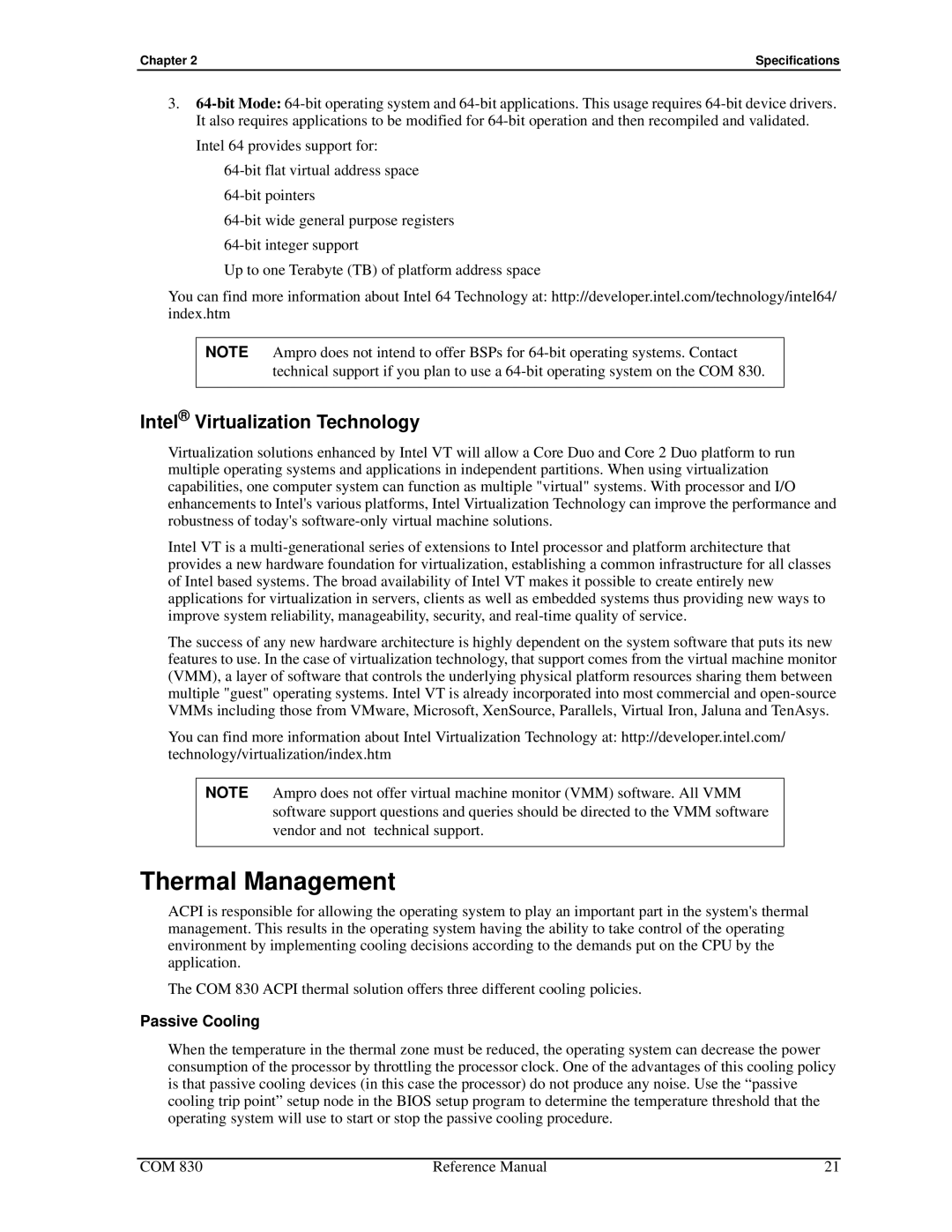
Chapter 2 | Specifications |
3.
Intel 64 provides support for:
Up to one Terabyte (TB) of platform address space
You can find more information about Intel 64 Technology at: http://developer.intel.com/technology/intel64/ index.htm
NOTE Ampro does not intend to offer BSPs for
Intel® Virtualization Technology
Virtualization solutions enhanced by Intel VT will allow a Core Duo and Core 2 Duo platform to run multiple operating systems and applications in independent partitions. When using virtualization capabilities, one computer system can function as multiple "virtual" systems. With processor and I/O enhancements to Intel's various platforms, Intel Virtualization Technology can improve the performance and robustness of today's
Intel VT is a
The success of any new hardware architecture is highly dependent on the system software that puts its new features to use. In the case of virtualization technology, that support comes from the virtual machine monitor (VMM), a layer of software that controls the underlying physical platform resources sharing them between multiple "guest" operating systems. Intel VT is already incorporated into most commercial and
You can find more information about Intel Virtualization Technology at: http://developer.intel.com/ technology/virtualization/index.htm
NOTE Ampro does not offer virtual machine monitor (VMM) software. All VMM software support questions and queries should be directed to the VMM software vendor and not technical support.
Thermal Management
ACPI is responsible for allowing the operating system to play an important part in the system's thermal management. This results in the operating system having the ability to take control of the operating environment by implementing cooling decisions according to the demands put on the CPU by the application.
The COM 830 ACPI thermal solution offers three different cooling policies.
Passive Cooling
When the temperature in the thermal zone must be reduced, the operating system can decrease the power consumption of the processor by throttling the processor clock. One of the advantages of this cooling policy is that passive cooling devices (in this case the processor) do not produce any noise. Use the “passive cooling trip point” setup node in the BIOS setup program to determine the temperature threshold that the operating system will use to start or stop the passive cooling procedure.
COM 830 | Reference Manual | 21 |
